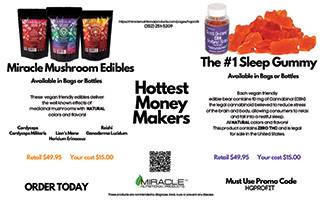
Sonic Youth’s Daydream Nation
It’s one of the greatest albums of the ’80s, one of top 50 guitar albums of all time and one of the finest 100 albums ever, but the numbers don’t do Daydream Nation justice. Even beyond such trivial lists, in 2006 the Library of Congress added the album to the National Recording Registry. So not only is Daydream Nation “culturally, historically, or aesthetically important” but it’s also in the company of similarly monumental recordings such as an 1895 Booker T. Washington Speech and the Dave Brubeck Quartet’s Time Out.
Despite the acclaim, though, the best summation of Sonic Youth’s overall greatness came during a conversation I had with Kill Rock Stars founder Slim Moon while researching an SY story shortly after the band’s 2006 album, Rather Ripped. “We will follow a favorite author for 20 years and 20 books, and forgive them for a bad book or two, but we rarely have these kinds of ongoing relationships with rock bands,” the musically intense Pacific Northwest expat began. “Sonic Youth has given us the richest, most consistent body of work of any rock band in the history of rock music. There ought to be hundreds of bands who have a multi-decade ‘conversation’ with their fans that has some real substance, but the truth is, there just isn’t. Sonic Youth is one of the only ones.”
Daydream Nation—now given the full-on reissue treatment nearly 20 years after its original release—reaffirms guitar as the backbone of rock ’n’ roll and frightens the hell out of anyone who thinks rock music is “too noisy.” And that’s the thing: This record is too noisy. It’s rock music in a nutshell—fuzzy, unpredictable and ready to hurtle off the rails at any moment, crashing down the mountain in a ball of flames. But, somehow, something holds it together. Thurston Moore, Kim Gordon, Lee Ranaldo and Steve Shelley, in making their most agreed-upon masterpiece (there are a handful in SY’s catalog), also set the standard for organized chaos in the form of a rock record. The year was 1988, and the first Bush was about to take the presidency without so much as a whimper from his competitor, so what were a group of hip, young New York musicians supposed to do aside from make the most punishingly beautiful album they could?
From one of the best track-one/side-ones of all time (“Teenage Riot”), which is about appointing J Mascis the leader of a nation that seemed in a perpetual daydream (Sonic Youth was collectively obsessed with Dinosaur Jr at the time), to the ending trilogy (a full 70 minutes later), this was clearly one of those Grand Statement works destined for either utter failure or complete success. The latter proved true; between those bookends is everything from mountain-tall guitar lines that would make Television proud to the stripped-back, surreal “Providence,” consisting of ghostly piano and an answering-machine message from The Minutemen’s Mike Watt.
It makes sense, then, that the band and Geffen chose to augment this remastered version with a mirror image: The second disc comprises a solid live version of every song from the original record, plus four hard-to-find studio-recorded covers of The Beatles, Neil Young, Mudhoney and Captain Beefheart. If you’ve never heard Sonic Youth do “Touch Me I’m Sick” or “Electricity” (from the pricey, out-of-print Beefheart tribute Fast ’n’ Bulbous), then you’re missing some of this iconic group’s most fun moments.
For open-minded listeners seeking the true possibilities of what can be accomplished through rock ’n’ roll, Daydream Nation was—and is—a wakeup call. “Yes, you can do whatever you want,” it seems to say. Over the years the album has earned Sonic Youth many a fan, perhaps the biggest among them being the aforementioned bass-playing Minuteman Watt. After his friend and bandleader D. Boon died in a car accident, Sonic Youth lit a fire under Watt, getting him playing again. When I phoned Watt (for the same SY article I interviewed Moon for), he got to the heart of why, after over 25 years, this band still matters.
“It’s easy to see through Sonic Youth that there are always possibilities,” he said. “Anything can happen. They redefine rock ’n’ roll for themselves and make it their own. It’s very empowering. It’s a revolution every few years where new people come into the fold and listen to their records and go to their shows. It’s hard to think of a world without Sonic Youth.”












